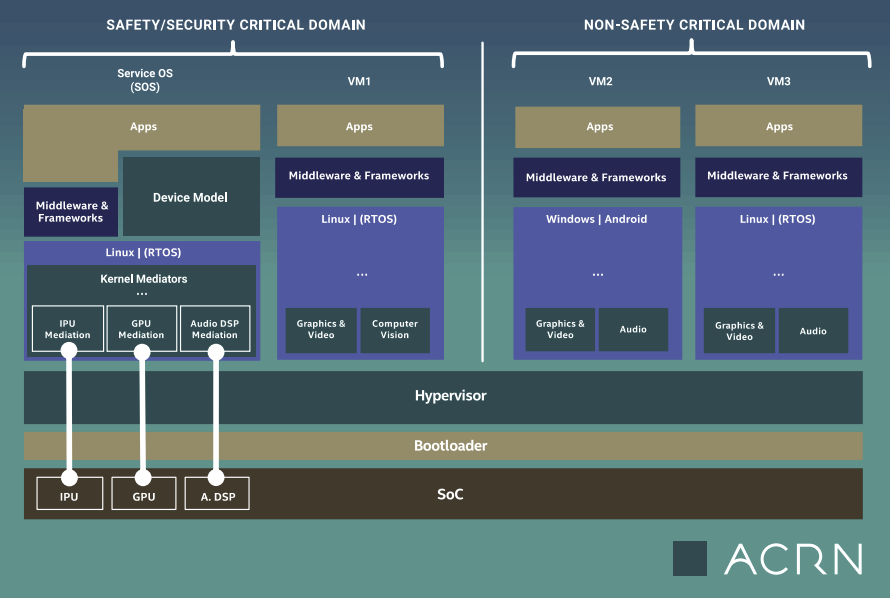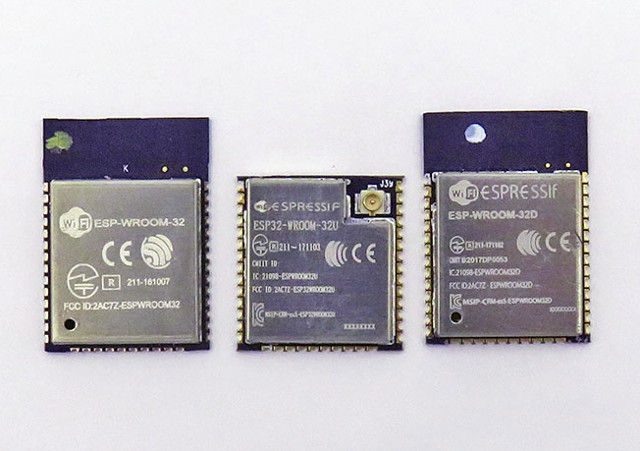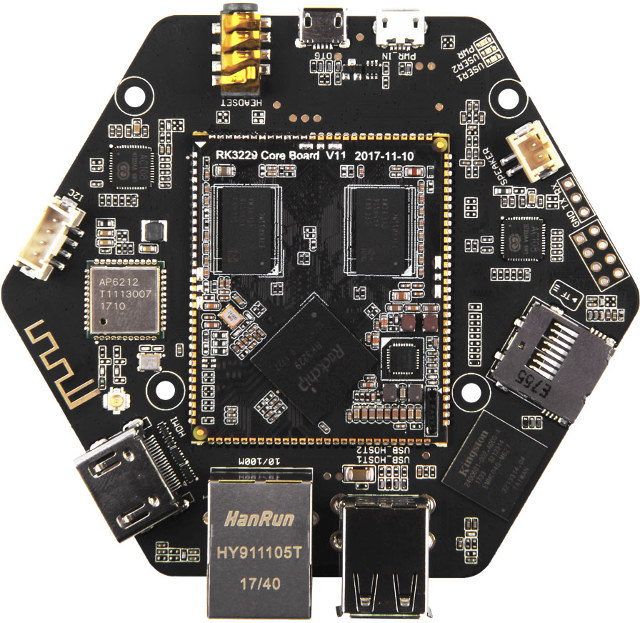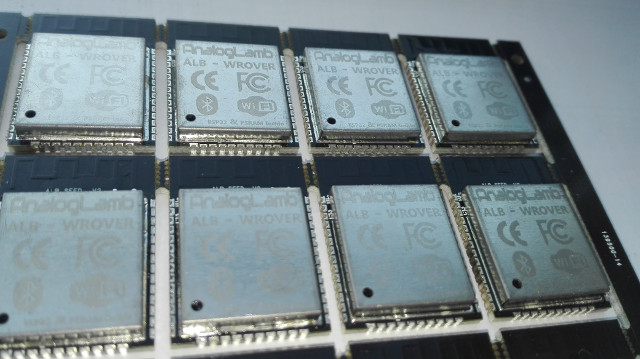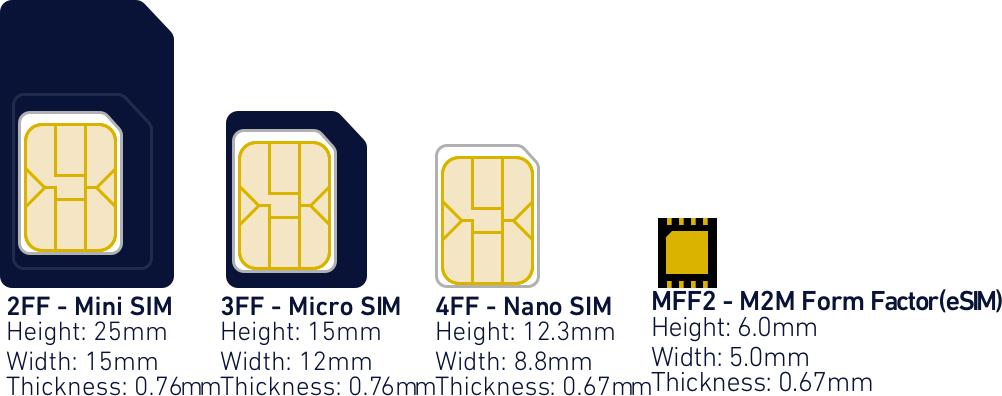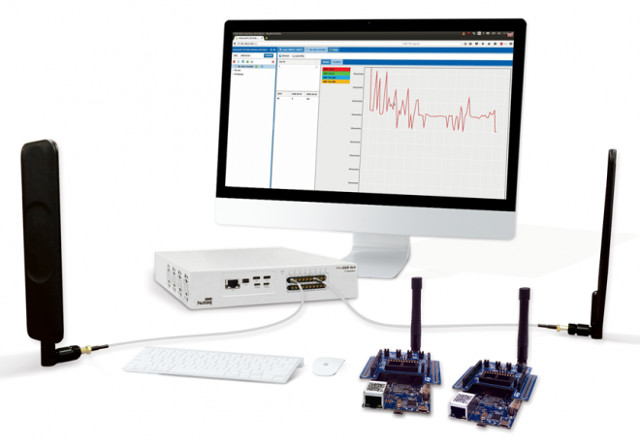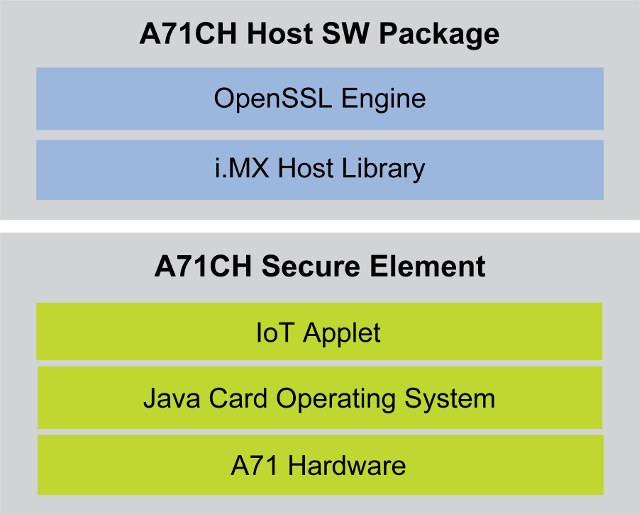FOSDEM is the “Free & Open Source Software Developers’ European Meeting” takes place the first week-end of February every year in Brussels, Belgium. It turns out there’s an event in Asia called FOSSASIA Summit that’s about to take place in Singapore on March 22-25. There are some differences however, as while FOSDEM is entirely free to attend, FOSSASIA requires to pay an entry fee to attend talks, although there are free tickets to access the exhibition hall and career fair. There are also less sessions as in FOSDEM, but still twelve different tracks with: Artificial Intelligence Blockchain Cloud, Container, DevOps Cybersecurity Database Kernel & Platform Open Data, Internet Society, Community Open Design, IoT, Hardware, Imaging Open Event Solutions Open Source in Business Science Tech Web and Mobile Since the event is spread out over four days, it should be easier to attend the specific sessions you are interested in. I’ve […]
ACRN is an Open Source Hypervisor Built for IoT Device Development
ACRN – pronounced “acorn” – is an open source reference hypervisor with a small footprint, real-time capabilities, adaptability with support for Linux, Android, and RTOS guest operating systems, built for safety critical code in mind, and specifically designed for IoT and embedded devices. The project is managed / supported by the Linux Foundation. A few more details about some of the key features of the solution: Two main components: the hypervisor itself, and its device model complete with rich I/O mediators managed by Linux-based Service OS (SOS). Small footprint – Approx. 25K lines of code (LOC) for ACRN hypervisor against 156K LOC for datacenter-centric hypervisors. Real Time – Low latency, enables faster boot time, improves overall responsiveness with hardware communication Adaptability – Multi-OS support for guest operating systems like Linux, Android, RTOSes… Safety Criticality – Safety critical workloads have priority, isolation of safety critical workloads Built for Embedded IoT – Virtualization […]
ESP32-WROOM-32D / ESP32-WROOM-32U WiFi & Bluetooth Modules Deliver Better RF Performance
ESP-WROOM-32 is likely the most popular ESP32 WiFi + Bluetooth module on the market, but a few months ago, Espressif Systems unveiled two variants named ESP32-WROOM-32D / ESP32-WROOM-32U, which are based on ESP32-D0WD (5x5mm package) instead of ESP32-D0WDQ6 (6x6mm package), and are said to offer better RF performance ESP32-WROOM-32D is the most similar to ESP-WROOM-32 since it also comes with a PCB antenna, while ESP32-WROOM-32U is much smaller as it relies on an external WiFi/Bluetooth antenna via a u.FL connector. Both new modules are pin-to-pin compatible with ESP-WROOM-32 Key features: CPU – Espressif ESP32-D0WD dual core Tensilica processor Storage – 32Mbit SPI flash Crystal – 40 MHz Connectivity – Wi-Fi 802.11 b/g/n up to 150 Mbps, Bluetooth 4.2 LE I/Os – 38- catellagated pin with I/Os + GND plane Antenna ESP32-WROOM-32D – on-board antenna ESP32-WROOM-32U – u.FL connector for external IPEX antenna Dimensions ESP32-WROOM-32D – 18 x 25.5 x 3.1 […]
ReSpeaker Core v2 is a 6-Mic Array Audio Development Kit Powered by Rockchip RK3229 Processor
Seeed Studio launched ReSpeaker Core board designed for voice interaction in 2016. The board was based on a Mediatek MT7688 MIPS WiSoC running OpenWrt, and came with a single built-in microphone, although a microphone array board with 7 microphones and 12 LEDs was also offered as option. The company is now back with a more powerful update of the board – called ReSpeaker Core v2 – featuring Rockchip RK3229 quad core Cortex A7 processor, running Debian Linux, and with 6 on-board microphones. Beside WiFi connectivity, the board also adds Ethernet and Bluetooth 4.0, as well as a USB hot port compared to the previous version. ReSpeaker Core v2 specifications: SoC – Rockchip RK3229 quad core Cortex A7 processor @ up to 1.5 GHz with Arm Mali-400MP2 GPU System Memory – 1GB DDR3 RAM Storage – 4GB eMMC flash, micro SD card slot Video Output – HDMI 2.0 (but drivers not […]
ALB32-WROVER is an ESP-WROOM-32 Compatible Module with 32 Mbit PSRAM, up to 128 Mbit Flash
ESP-WROOM-32 is one of the most commonly ESP32 WiFi + Bluetooth module, and does the job for many applications. However, it only includes 4MB (32Mbit) flash, and no external PSRAM, while Espressif ESP32 chip itself supports up to 128 Mbit (16MB) NOR flash and up to 32Mbit (4MB) PSRAM, so for applications demanding more resources (e.g. MicroPython), or for initial development it would good to have a module maxing out memory and storage capabilities of the chip. Analog Lamb ALB32-WROVER does exactly that with 32 Mbit PSRAM, and 32 to 128 Mbit flash, in a form factor compatible with ESP-WROOM-32 module. ALB32-WROVER specifications: WiSoC – Espressif ESP32 (Rev0?) Wi-Fi and Bluetooth combo chip External Memory – 32Mb PSRAM Storage – 32, 64, or 128Mbit Flash Dimensions – 18 x 25 x 3 mm Compatible with ESP-WROOM-32, except for GPIO16 & 17 (used for PSRAM) It’s very odd the company claims the […]
Hologram Introduces Global IoT eSIM Chip
Hologram provides a SIM card for IoT projects that can be used in most of the world, and I own a developer SIM card that’s very convenient for reviews and evaluation with 10MB free data per month, which I used for example in a recent 3G HAT board for Raspberry Pi. The company also manage network by software, so they were on of the first SIM providers to enable 4G LTE Cat M1 and NB-IoT without changing anything to the SIM card itself. Since everything is programmable, not tied to any specific service provider, the SIM card form factors may not be the most convenient, and instead for a lower form factor, and possibly better reliability Hologram eSIM based on MFF2 form factor may be a better solution for new projects. The chip measures just 6x5mm with 0.67mm thickness, and would be soldered on the board of your cellular IoT […]
Nutaq PicoLTE IoT Kit Allows NB-IoT and LTE Cat M1 Devices Testing Anywhere
If you’ve been following cellular IoT news you must have read plenty of announced about NB-IoT and LTE Cat M1 (eMTC) hardware platforms bring LTE connectivity at lower power and somewhat lower cost than existing 3GPP networks. That’s all good, and you may have decided to go ahead with a commercial project, except none of the Telco are providing LTE IoT connectivity in your area just yet, or if it does, you may also want to test your device in bands not allowed/supported in your country (at a permitted power level). If that’s the case, Nutaq PicoLTE IoT Kit should help as an LTE NarrowBand & Cat M test measurement platform for IoT that can test NB-IoT and Cat-M1 devices in all frequency bands. Nutaq PICOLTE IoT kit key features: Supports M1 & NB-IoT devices Proven compatibility with M1 & NB-IoT devices from over 5 manufacturers Test multiple devices simultaneously […]
NXP Unveils A71CH Secure Element Chip for Secure Peer-to-Peer or Cloud Connections
The industry clearly has an issue at hand with the security of the Internet of Things, and the problem is complex as some devices are easily accessible due to bad configuration (e.g. default username/password), while others may have security flaws at various levels of the software stack from the low level bootloaders to the operating systems, and applications. Nowadays, devices also need to be upgradeable, and communicate with the cloud, and that introduces other attack vectors in case malignant firmware is installed instead, or a man-in-the-middle attack occurs. While some people may claim security can be achieved by software only, we are seeing security evolving towards combined software and hardware solutions, for example with Arm Trustzone built into SoCs, but some companies are also introducing Secure Element chip, which Samsung has already done and integrated into their Artik modules to secure data from the hardware to the cloud. NXP has […]



